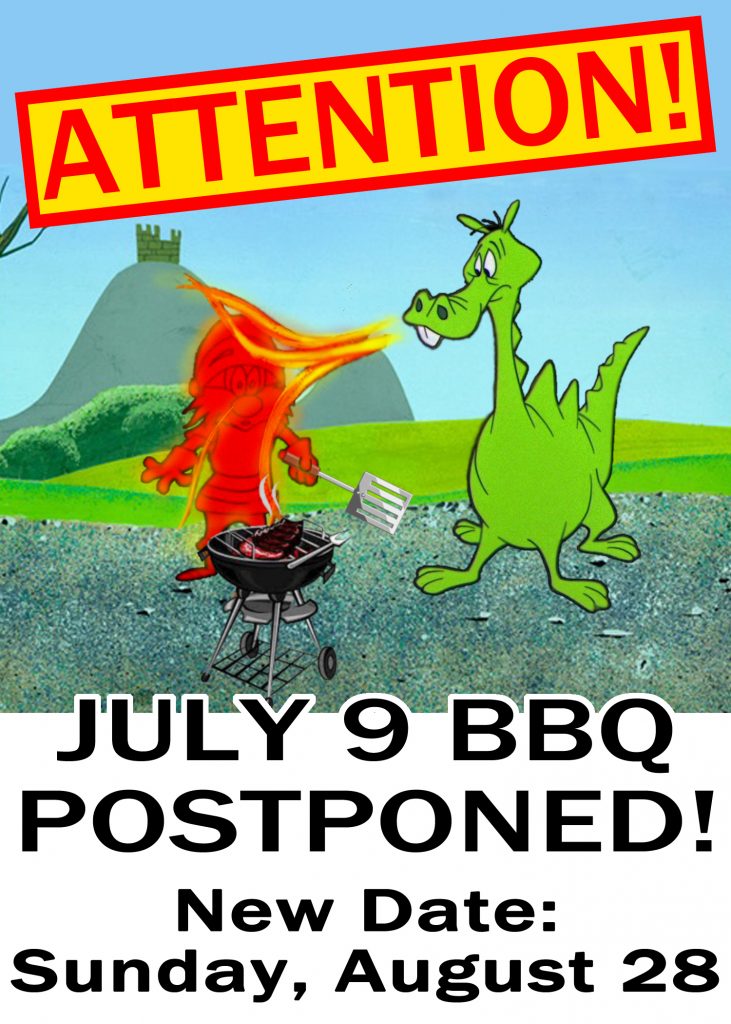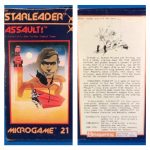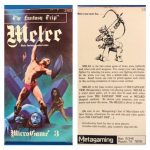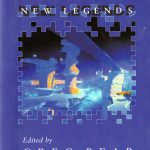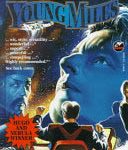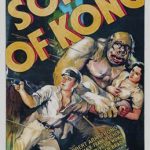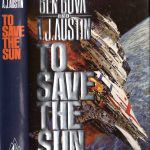This is Post 5 of 8.
8) THE TERRORS OF TOPANGA CANYON, PART II
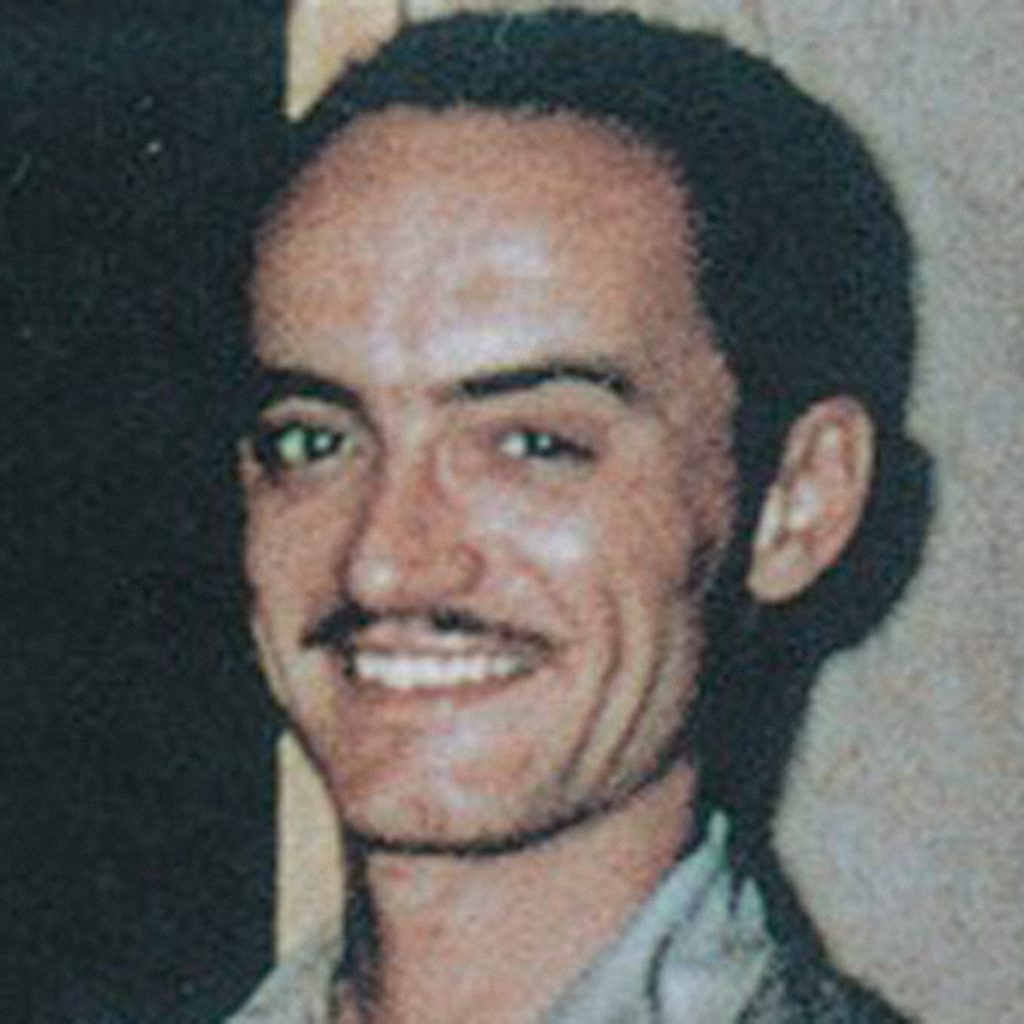 When last we left B-movie monster-maker Paul Blaisdell and wife, Jackie, he had recently enjoyed a bit-part in the teen-oriented film Dragstrip Girl, and modified a couple of his It Conquered the World “Flying Fingers” to double as bats for Roger Corman’s The Undead, in which Paul also appeared as a corpse! He had created the monster suit for Edward L. Cahn’s Voodoo Woman, but as it was simply a stripped-down version of his She-Creature costume and not fully his own, he remained unsatisfied with the result.
When last we left B-movie monster-maker Paul Blaisdell and wife, Jackie, he had recently enjoyed a bit-part in the teen-oriented film Dragstrip Girl, and modified a couple of his It Conquered the World “Flying Fingers” to double as bats for Roger Corman’s The Undead, in which Paul also appeared as a corpse! He had created the monster suit for Edward L. Cahn’s Voodoo Woman, but as it was simply a stripped-down version of his She-Creature costume and not fully his own, he remained unsatisfied with the result.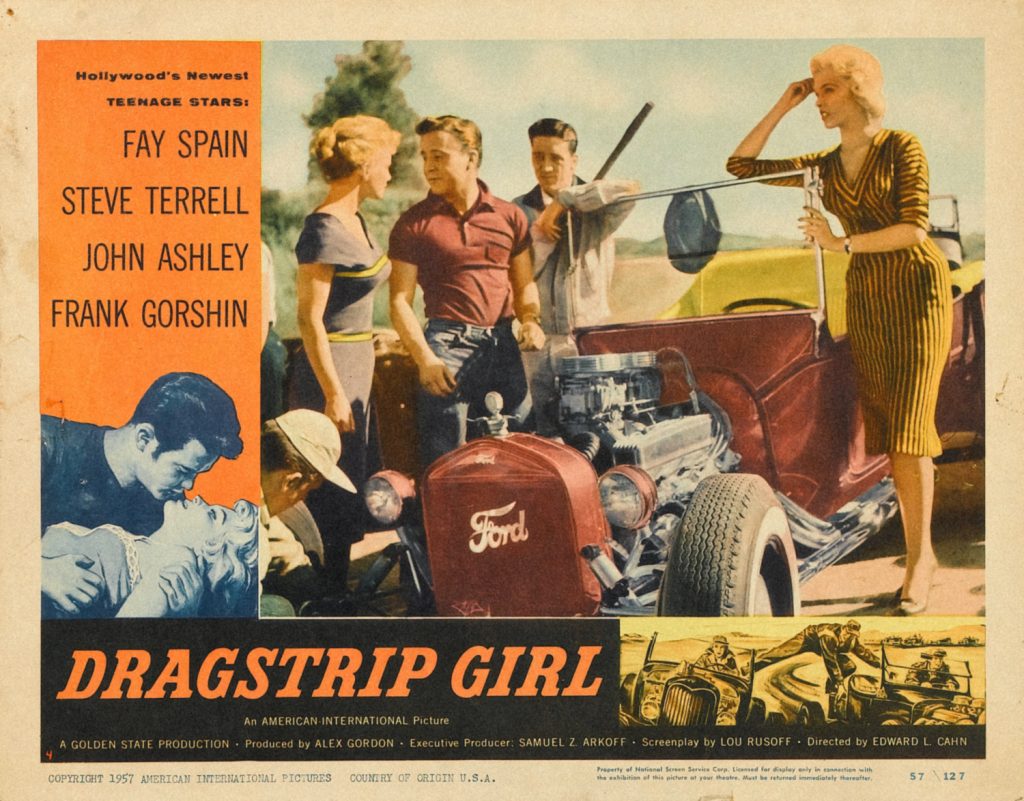
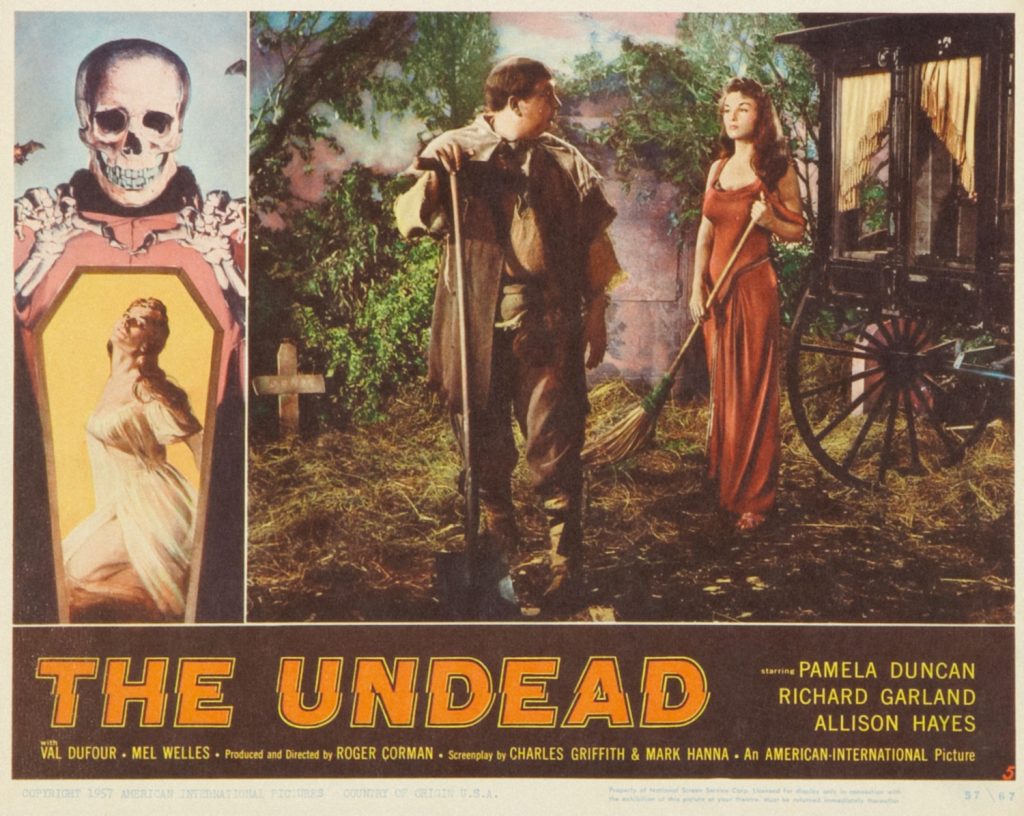
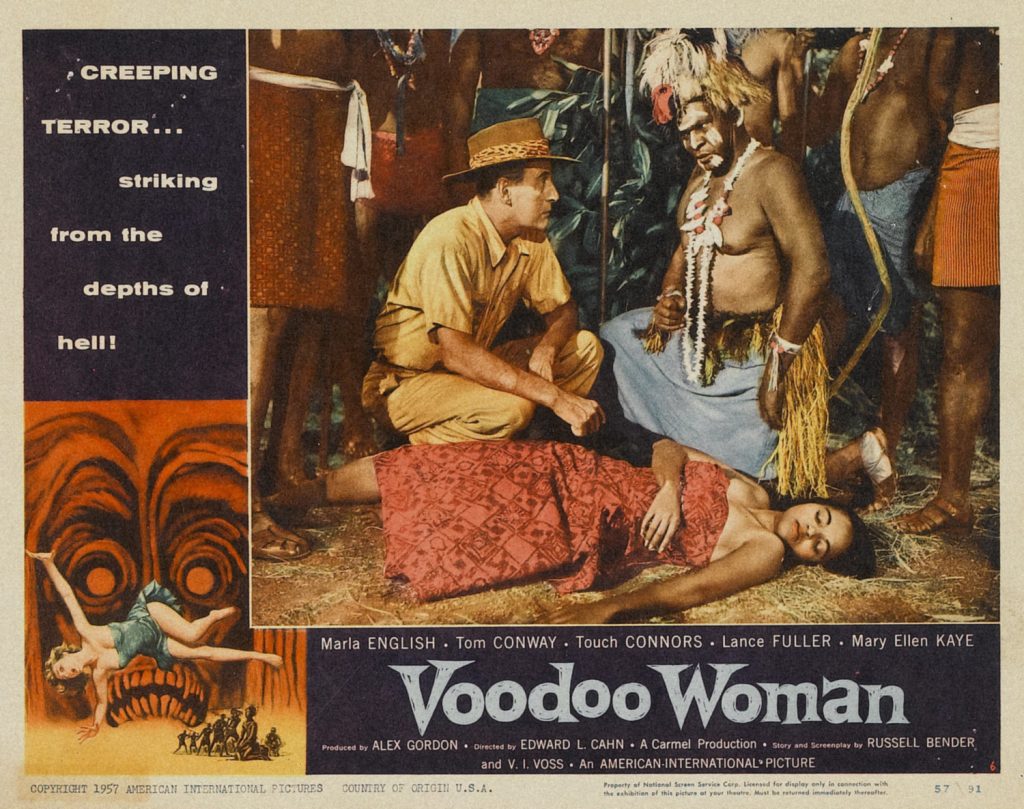
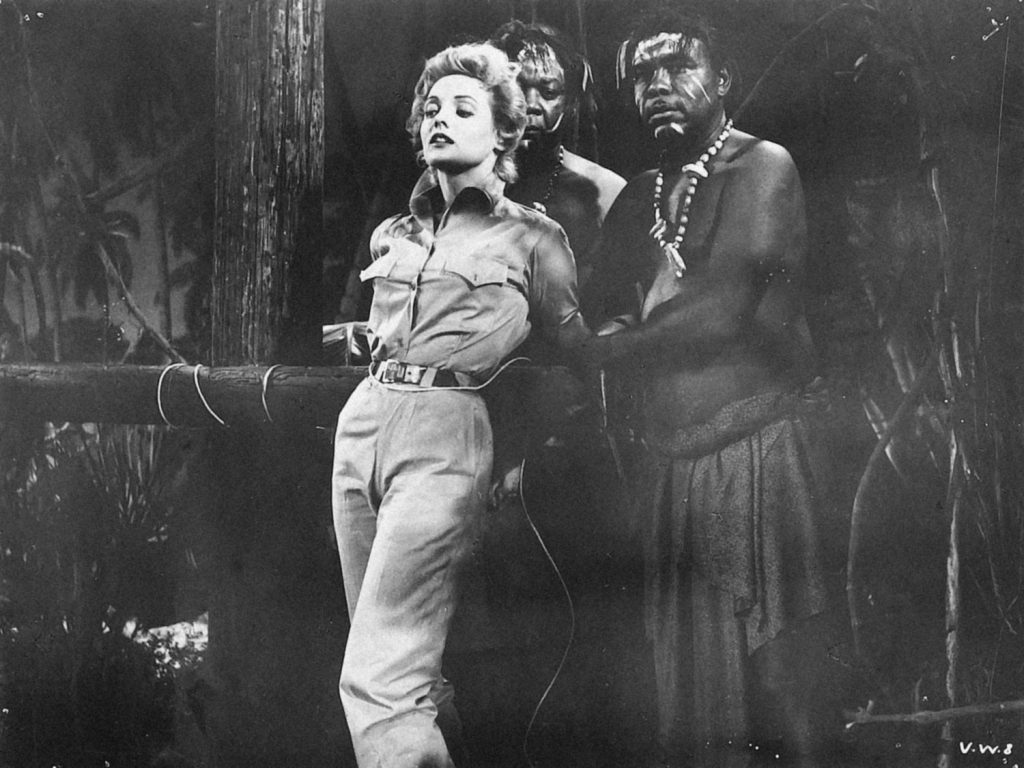
Blaisdell was working in some capacity on no less than eight productions in 1957! Corman had approached him to create the giant crustaceans of Attack of the Crab Monsters, but Paul, who was better getting to know the pitfalls of low-budget, independent filmmaking, had assessed the special effects budget as inadequate and turned Corman down. He felt that a sufficiently realistic giant crab could not be satisfactorily realized for the money that was on the table.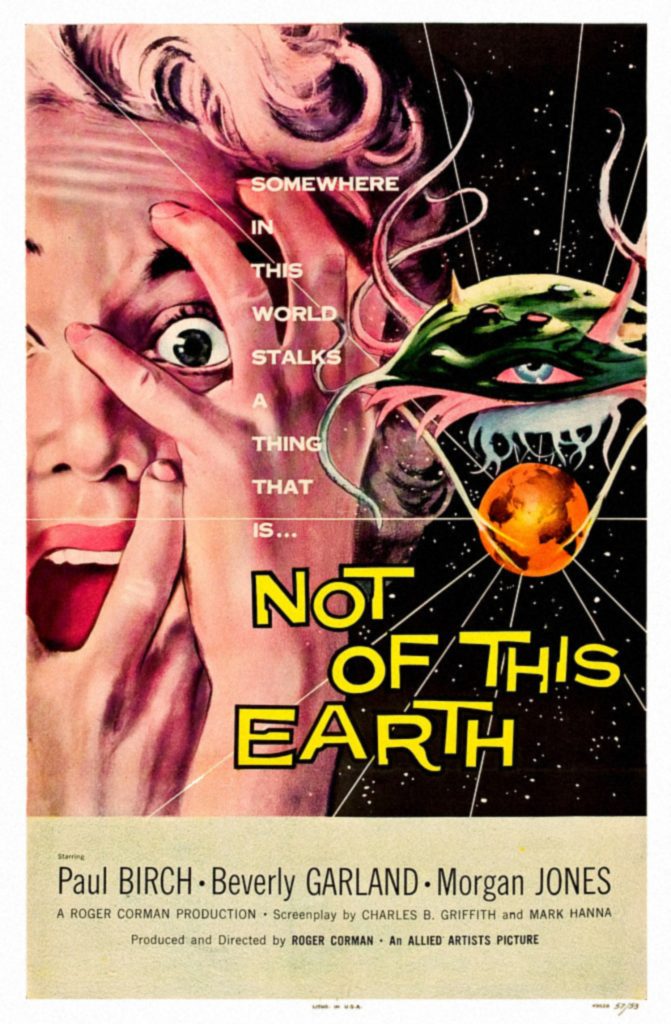
He did, however, sign on to a second Corman project that year, Not of This Earth, acquainted as he was with cast members Paul Birch and Beverly Garland.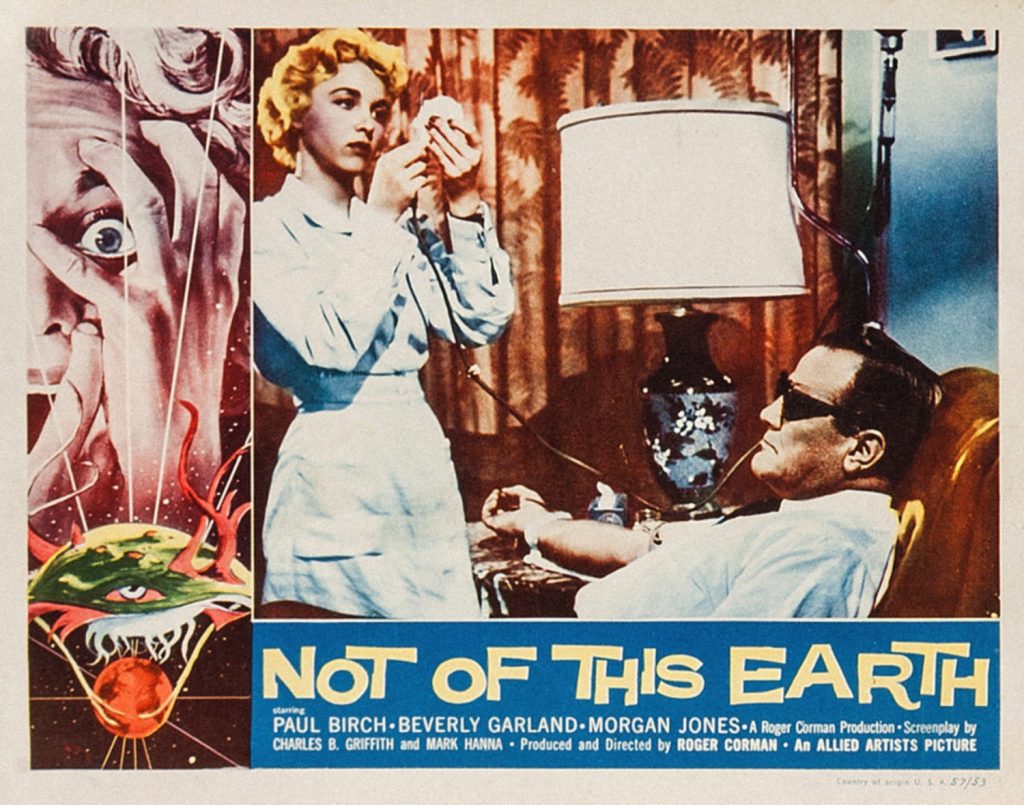
For this project, he fashioned a flying umbrella creature for a scene that sees the eerie thing dispatch a cast member. Not of This Earth introduced on screen an old SF concept, that of matter transmission across space, later popularized on television’s Star Trek.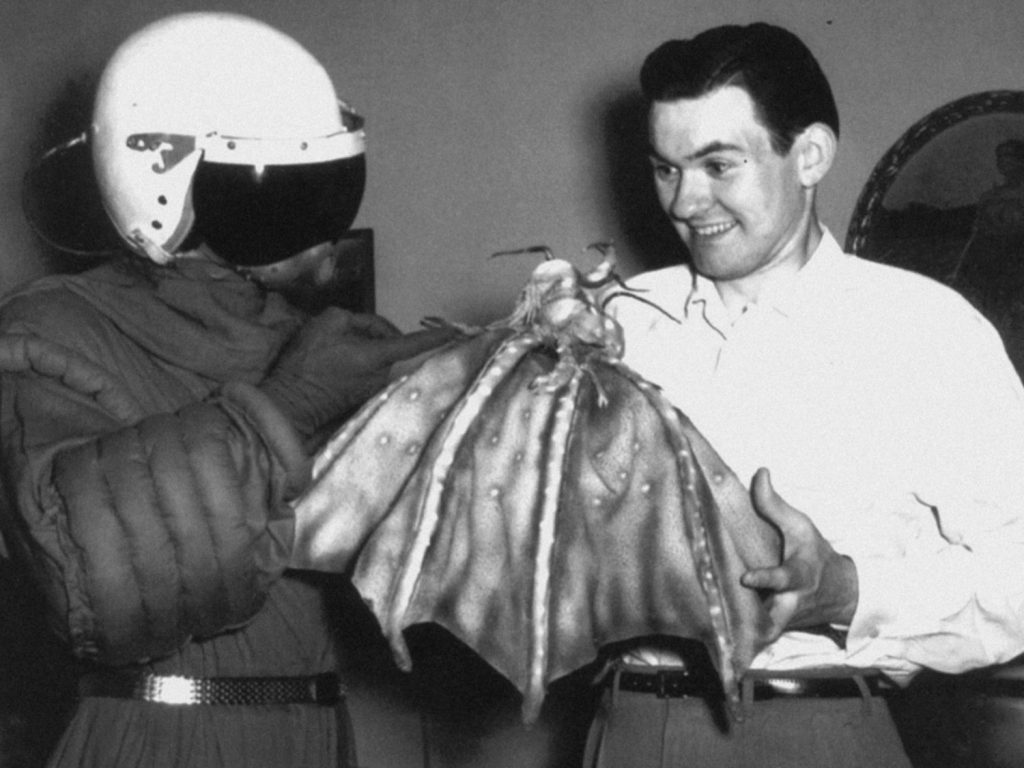
American International Pictures had entered into an arrangement with a British distributor whereby American actors and scriptwriters were loaned out to the overseas producer in exchange for a share of the resulting films. AIP got to distribute the movies in North America, and the British company got to feature American actors, which helped to successfully market a film in the U.S.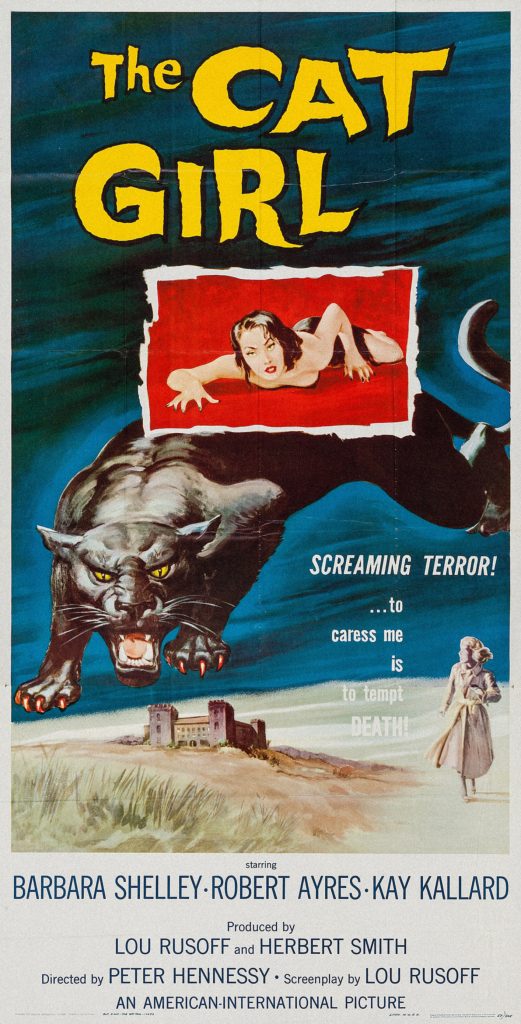
Cat Girl, similar thematically to Val Lewton’s better-known Cat People, was the first such co-production. But AIP’s James Nicholson was unhappy with the film as delivered; he felt there was too much ambiguity as to the lead character—was she cat or girl, actually a were-leopard, or simply a mentally unbalanced and delusional woman? Audiences would want to see a transformation scene, he argued, and Blaisdell was asked to come up with a cat suit over the span of a weekend as the filming of insert shots was scheduled for Monday morning! Blaisdell dutifully delivered, but the fleeting inserts were hastily filmed and did little to satisfy Nicholson’s concerns, in my view.
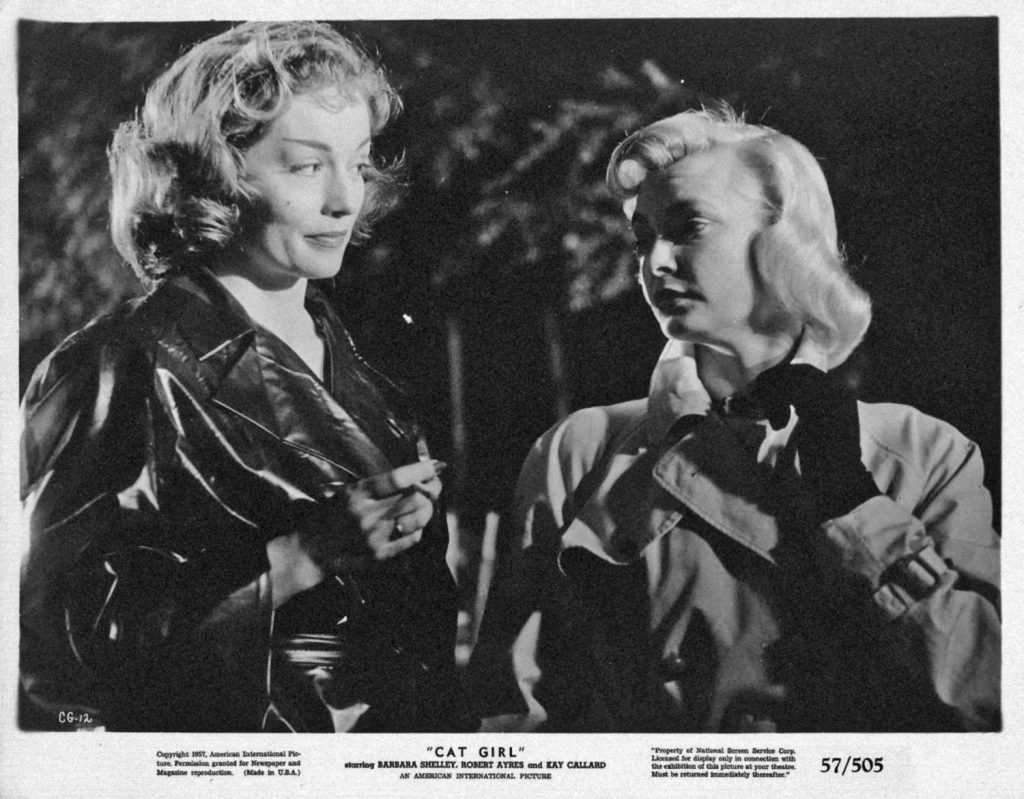
As Blaisdell’s solid reputation grew within the low-budget filmmaking community, greater in demand became his services. Al Zimbalist approached Paul about a project called Monster From Green Hell, involving radiation-mutated wasps that grow to enormous size. Paul produced some preliminary pen-and-ink sketches for the producer and was ready to negotiate a price for a full-sized wasp monster but never heard anything further! Ultimately, Zimbalist chose to use stop-motion puppets for his monsters, leaving Paul unceremoniously hanging. Blaisdell was never paid for his sketches.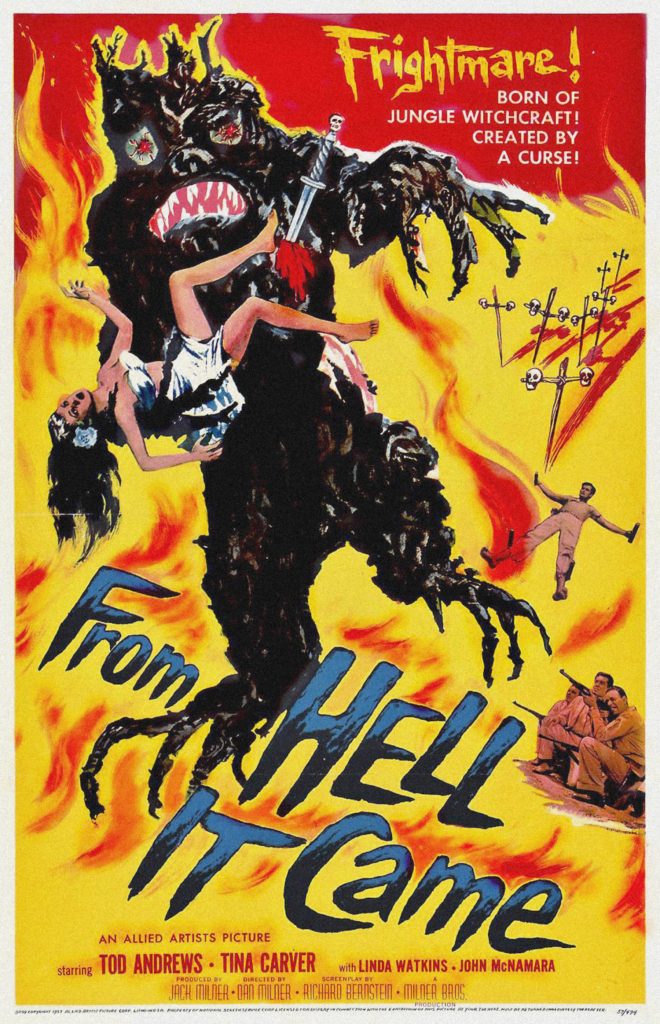
The Milner Brothers, Jack and Dan, sought Paul’s input on their occult/horror production, From Hell it Came. Blaisdell produced a number of beautiful colour sketches of his design for the script’s required tree monster. Again, crickets. The producer-brothers had contracted Halloween mask manufacturer Don Post Studios to create the tree monster suit, without Paul’s knowledge or involvement. Their tree monster was virtually a carbon-copy of Paul’s design.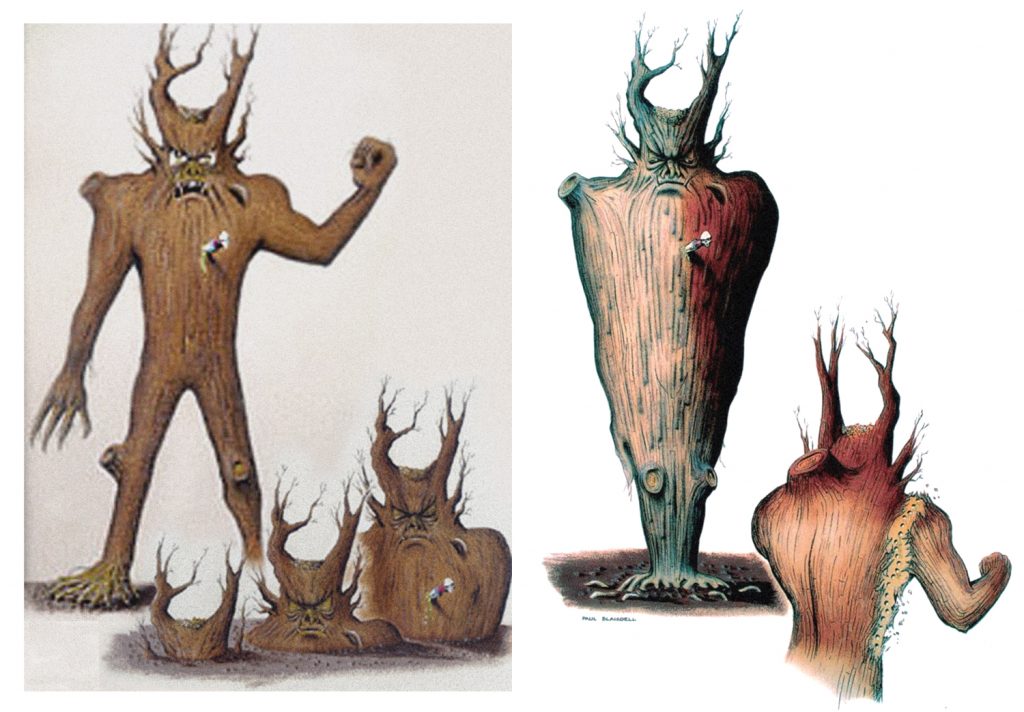
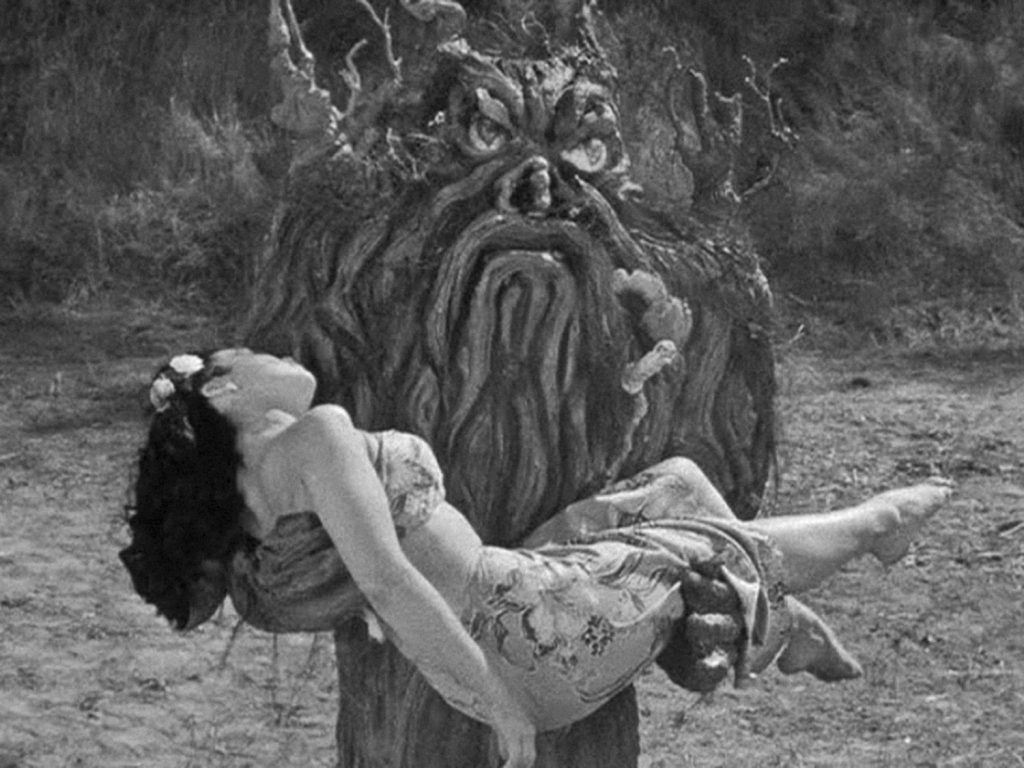
Feeling ripped off and disrespected, the naïve Blaisdell was beginning to sour on the rapaciously ego-driven, thankless, often dishonest, and miserly low-budget film industry.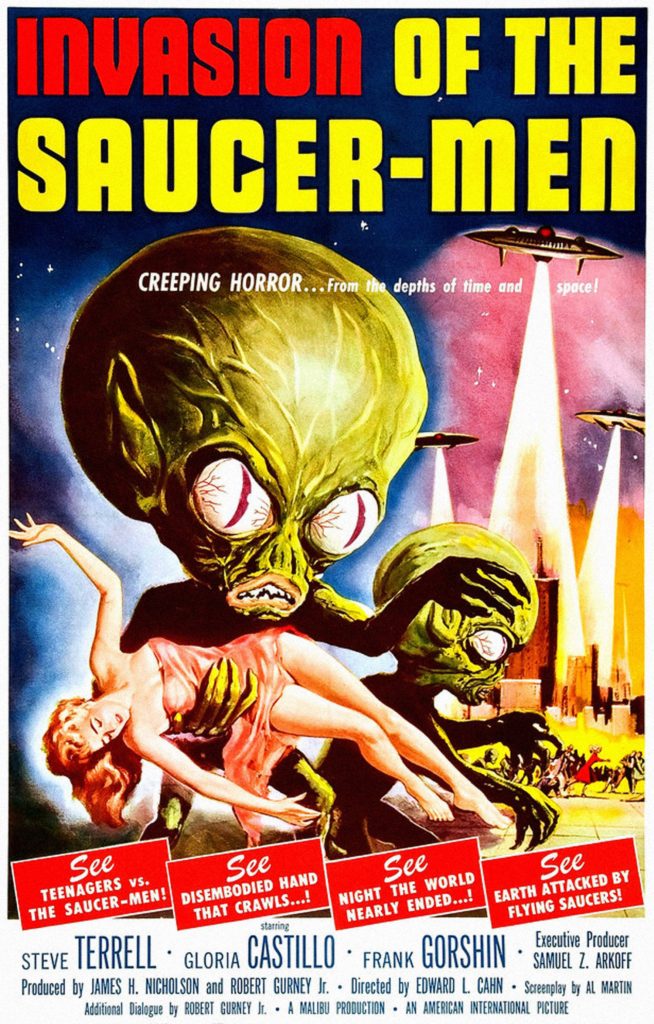
For the sci-fi/comedy Invasion of the Saucer Men, Paul, assisted by close friend Bob Burns, created one of the 1950s’ most memorable space-alien designs. Five individually-crafted costumes were fabricated, one of these the finely detailed “hero” costume, so-called, used for close-ups. Little-people actors portrayed the saucer men.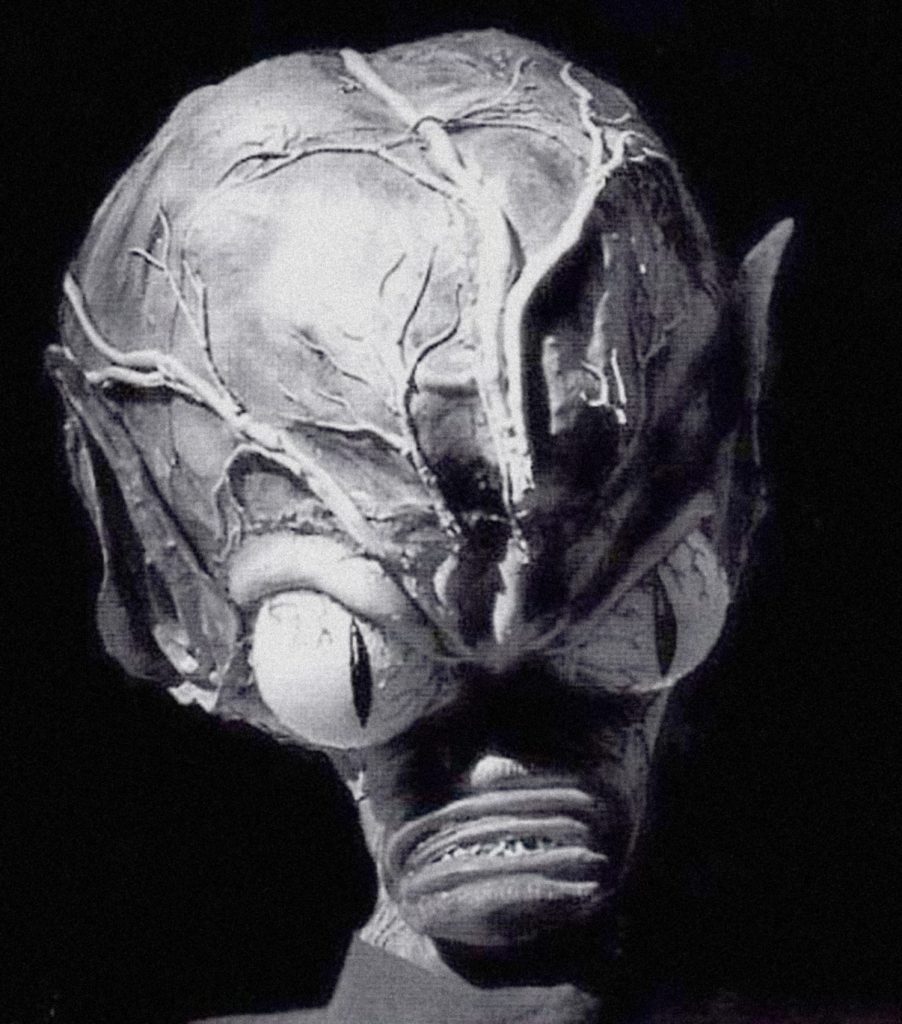
Paul sculpted a master alien head in plaster over chicken wire, from which he fabricated fiberglass and latex headpieces. He employed Styrofoam balls as eyes, and ran liquid rubber through a cake decorator to create the protruding veins visible on the aliens’ bulbous craniums. The saucer men’s hands were built up over gardening gloves.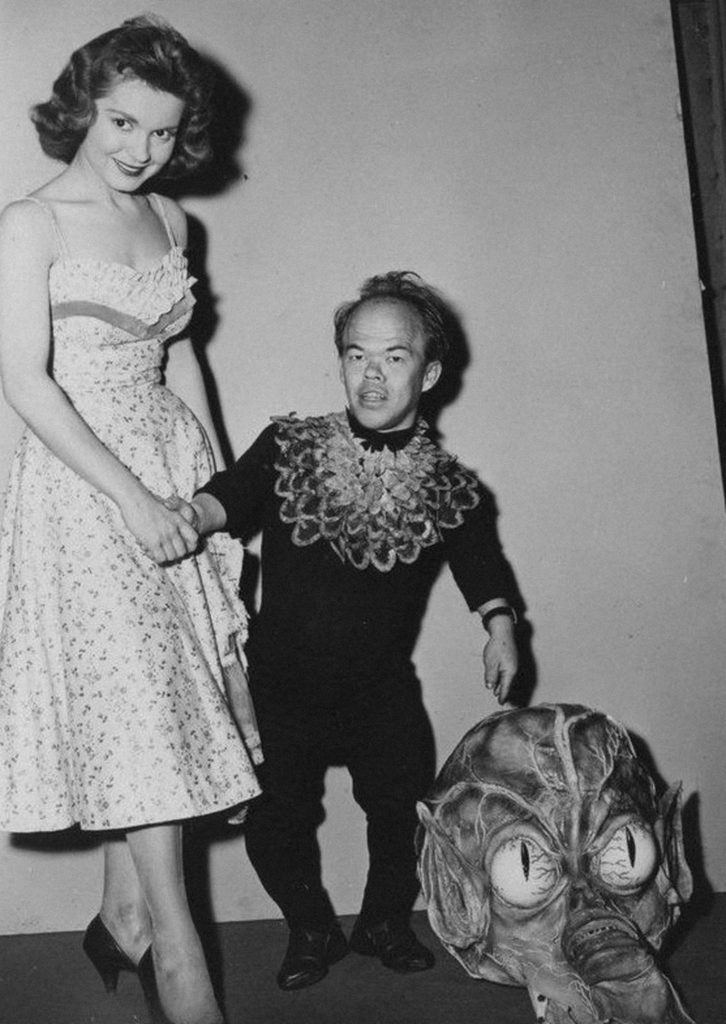
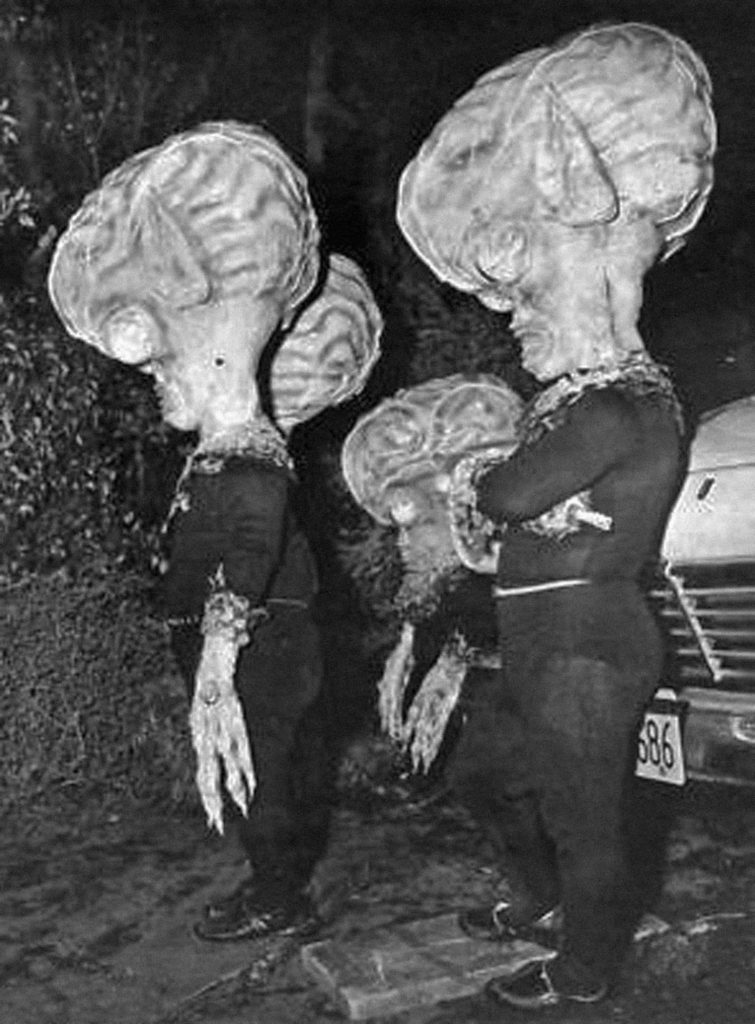
Paul also carved from wood the film’s swoopy flying saucer.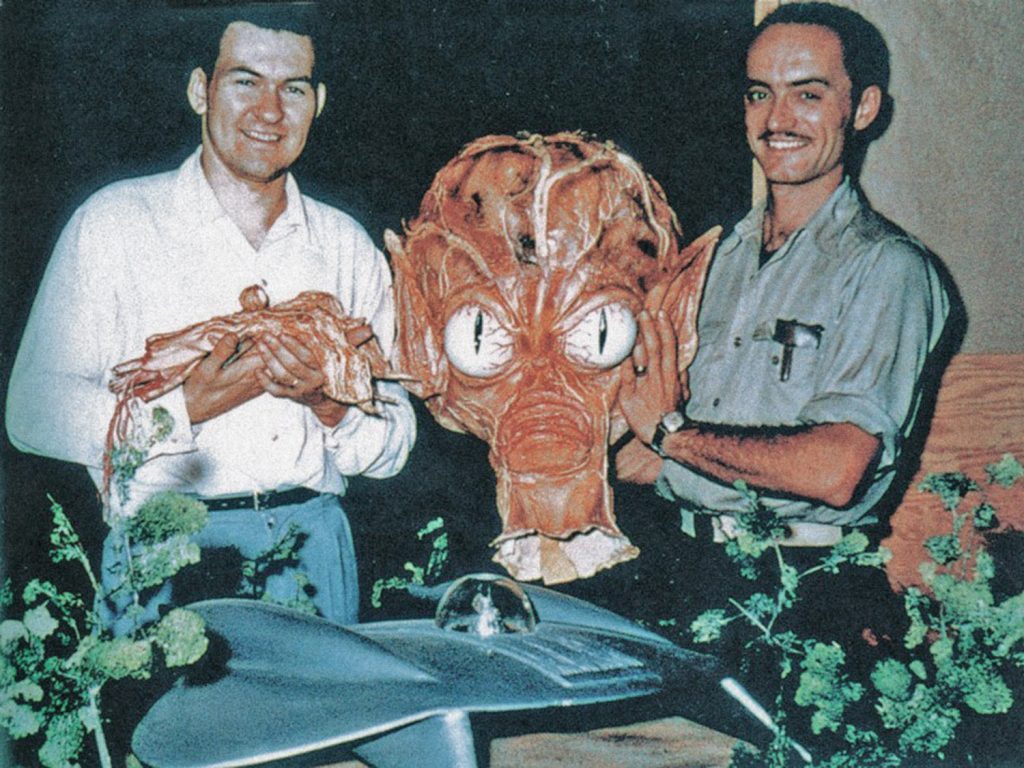
Interestingly, Invasion of the Saucer Men depicted a government cover-up in relation to the alien visitors well before such beliefs began to permeate UFOlogy years later.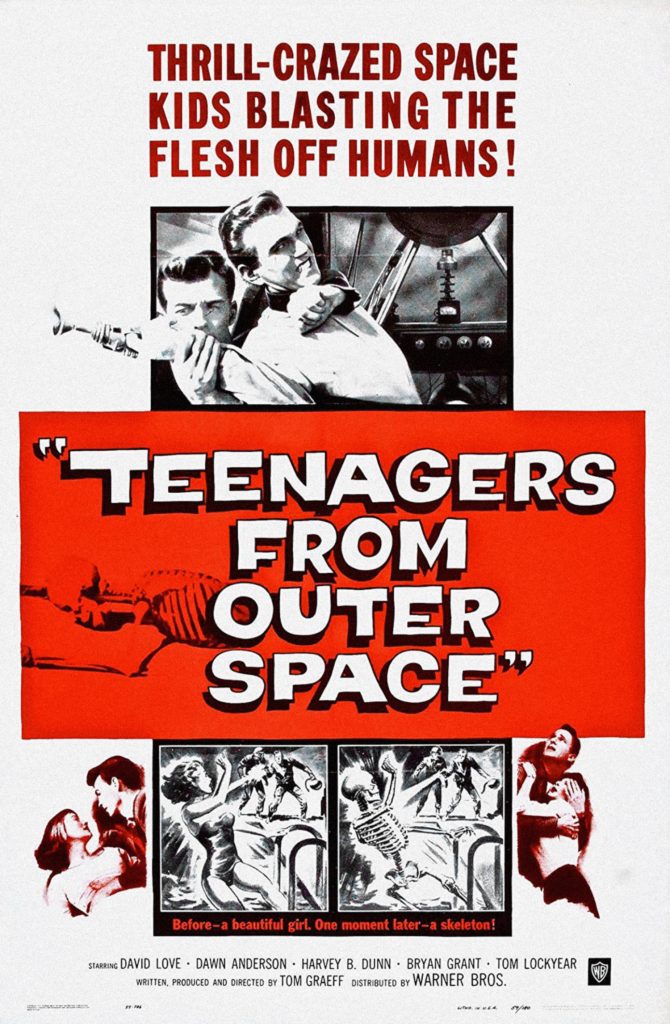
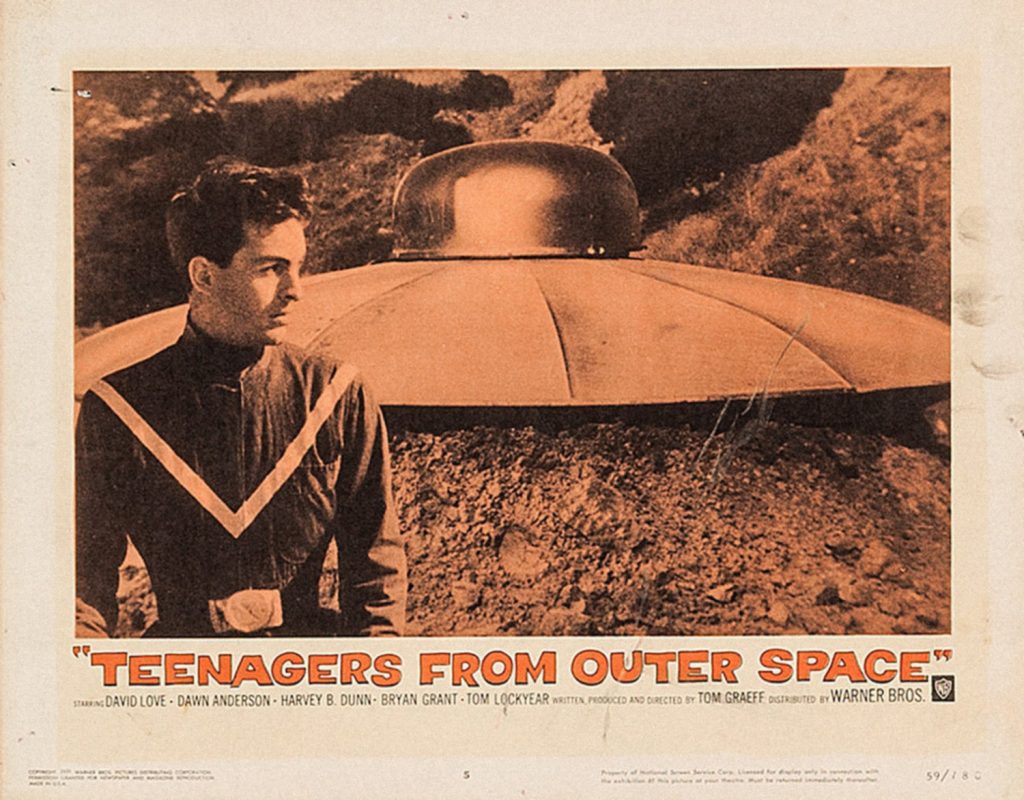
The nature of the low-budget film industry’s tight schedules was such that production time was quick and often eleventh-hour improvisational. Work sometimes went uncredited. Paul, for example, contributed to both Teenagers from Outer Space and Teenage Caveman, special effects props and a “Beastman” costume, respectively, without acknowledgement for his efforts.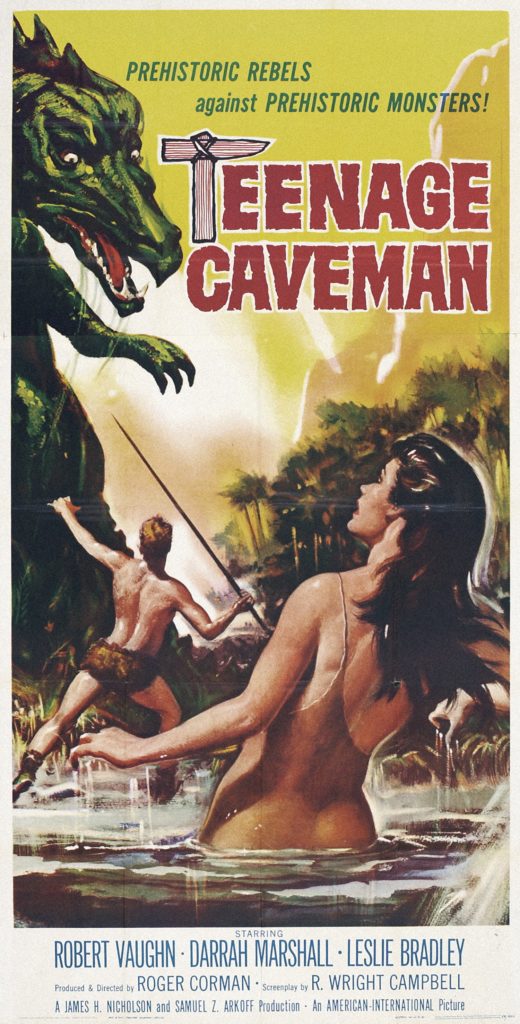
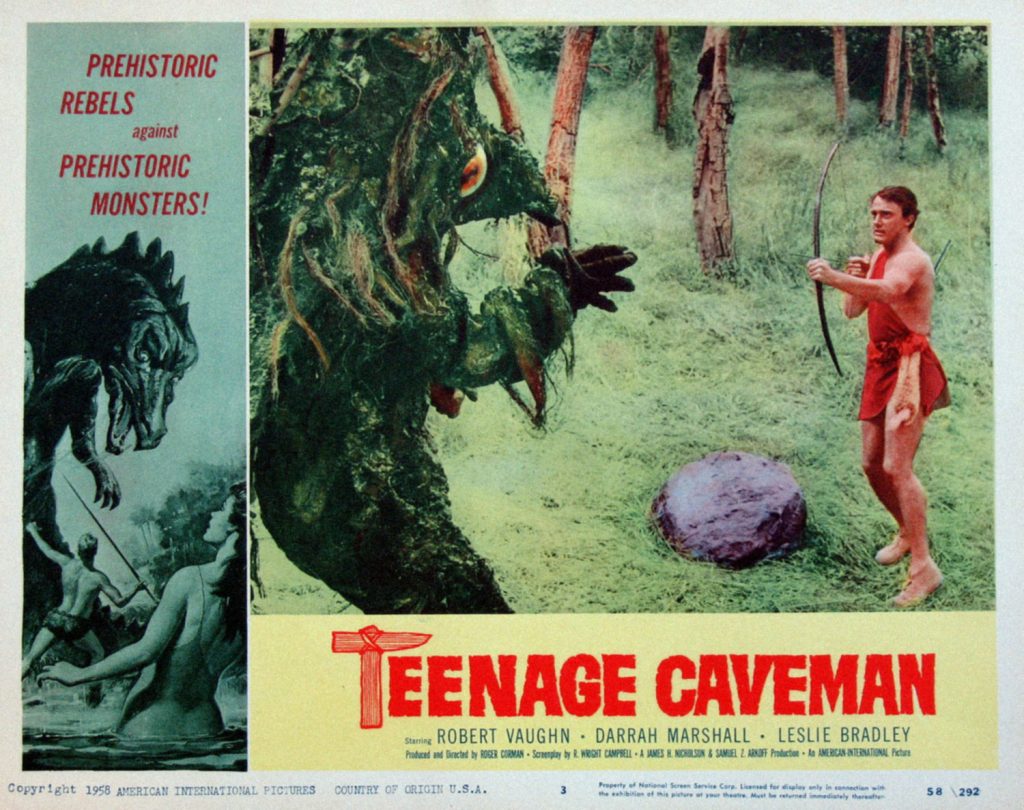
He also fashioned props for Bert I. Gordon’s The Amazing Colossal Man, notably the giant hypodermic needle employed in one scene. Footage shot for the film was recycled for its sequel, War of the Colossal Beast the following year.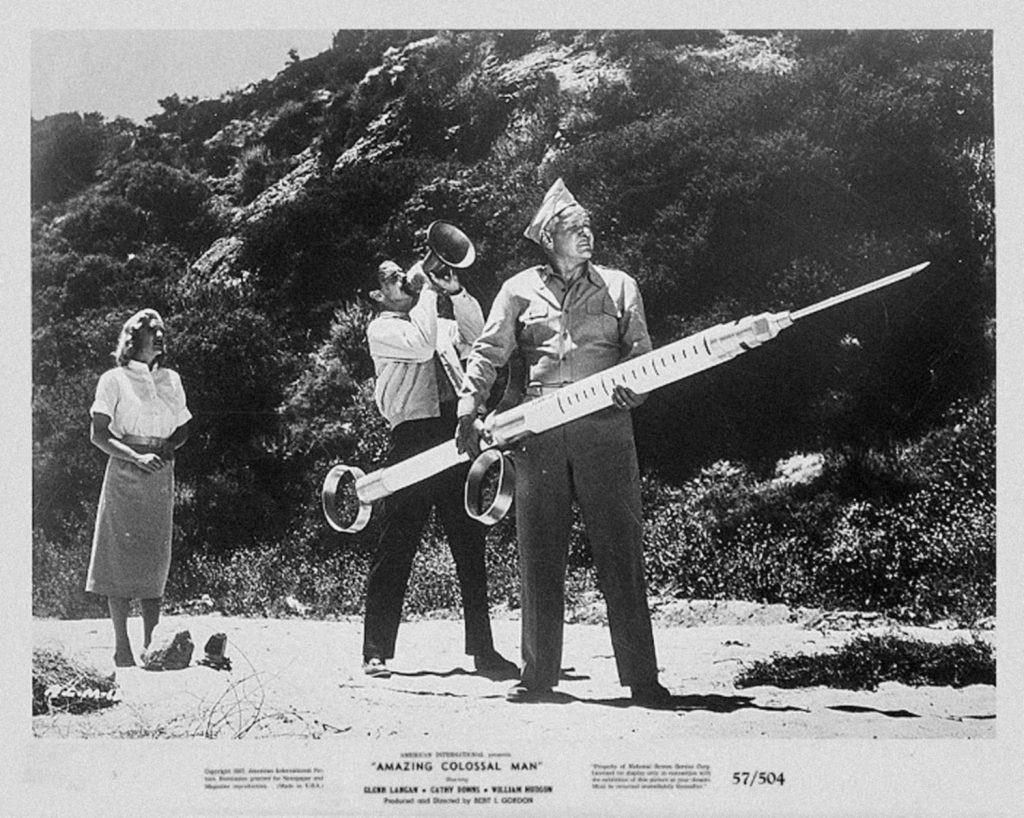
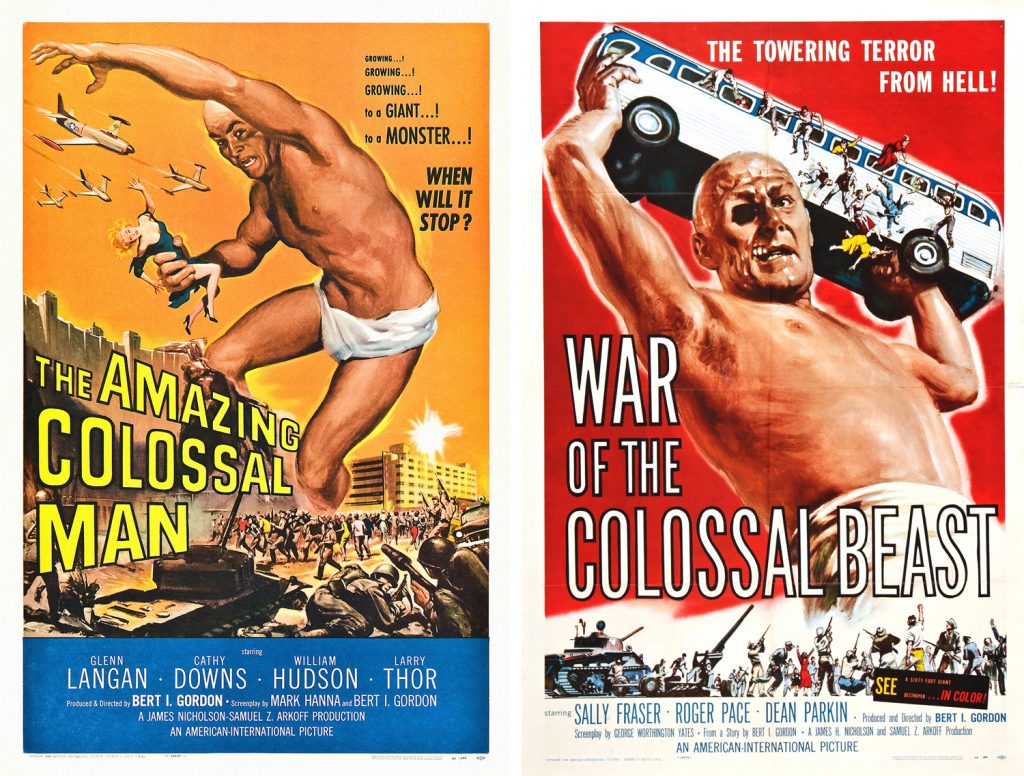
He and Jackie were credited, as special designers, however, on Gordon’s Attack of the Puppet People.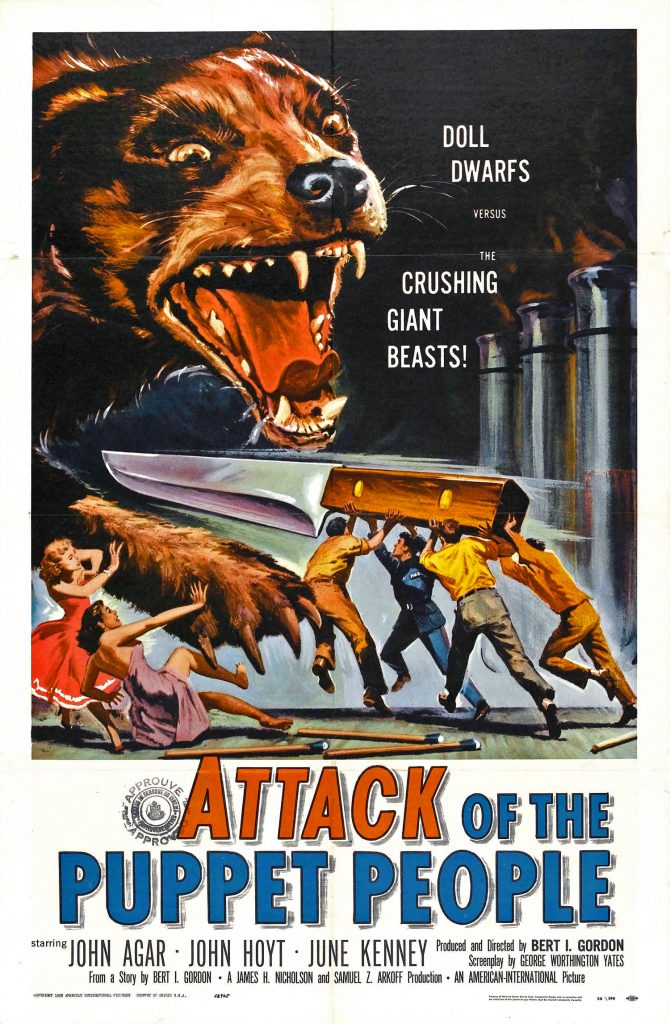
They built most of the oversized props used to give the impression that the actors were no taller than a doll—producers had borrowed the telephone, which was a promotional showpiece used for marketing purposes by the phone company. 
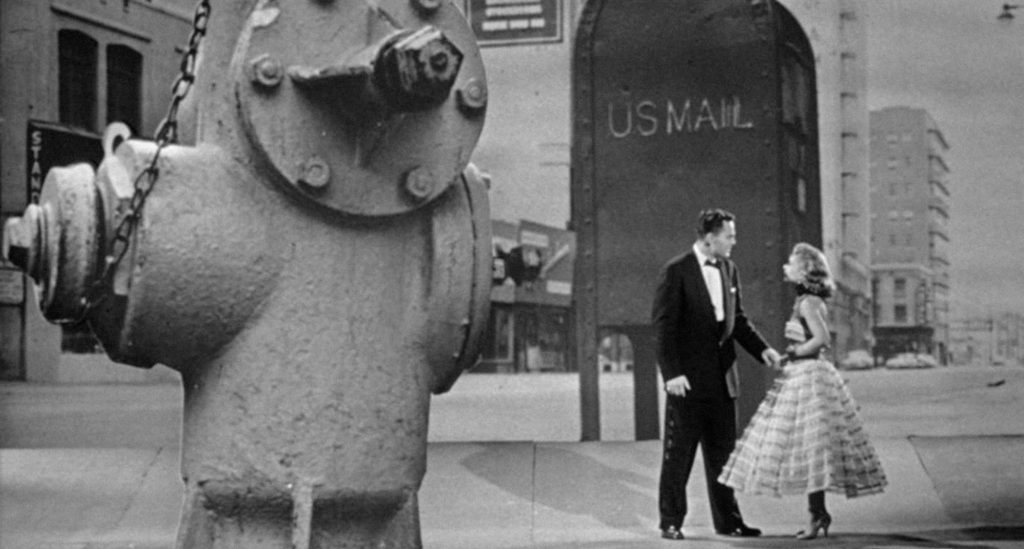
Gordon’s The Spider, sometimes called Earth vs. the Spider, used split-screen to meld together on screen a tarantula on miniature sets with full-size actors and locations. Blaisdell’s contribution to the production was that of a dummy police officer emaciated by the giant spider.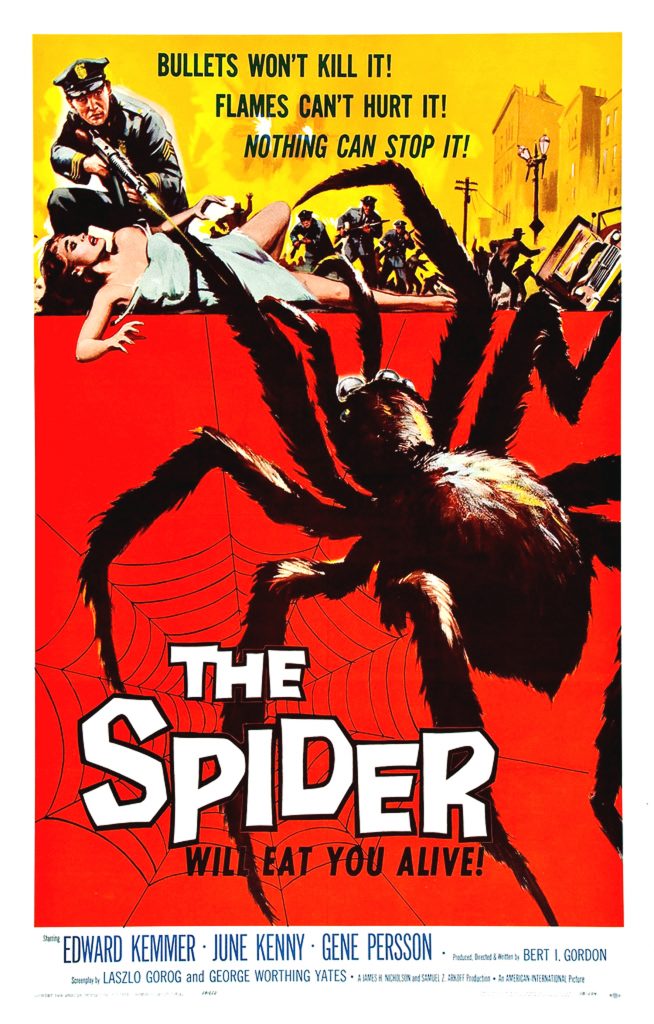
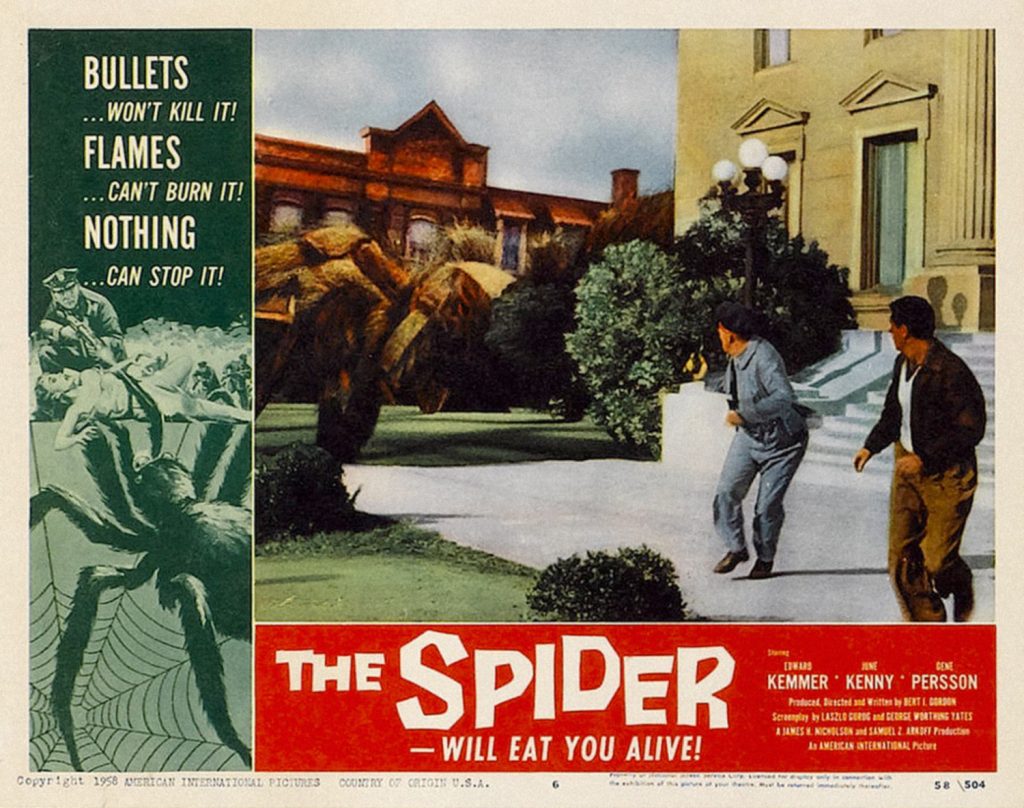
If his films are any indication, it seems that for Bert I. Gordon, size matters!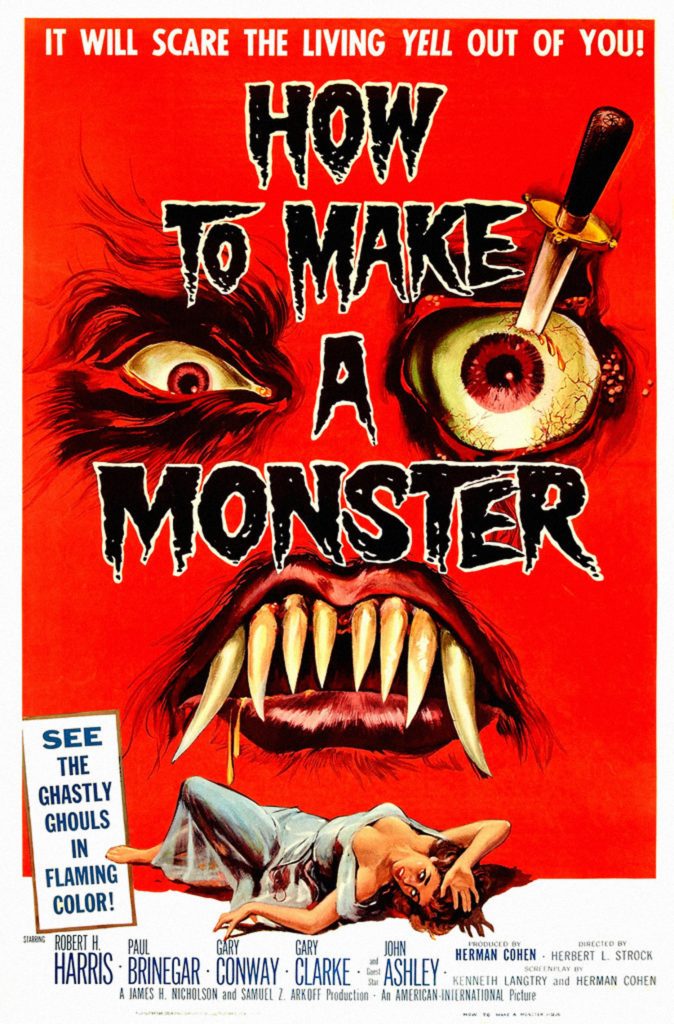
How to Make a Monster was about a disgruntled make-up artist fired by a movie studio who subsequently seeks murderous revenge on the company’s executives! Blaisdell’s collection of movie-monster masks and costumes were used to represent the make-up man’s work.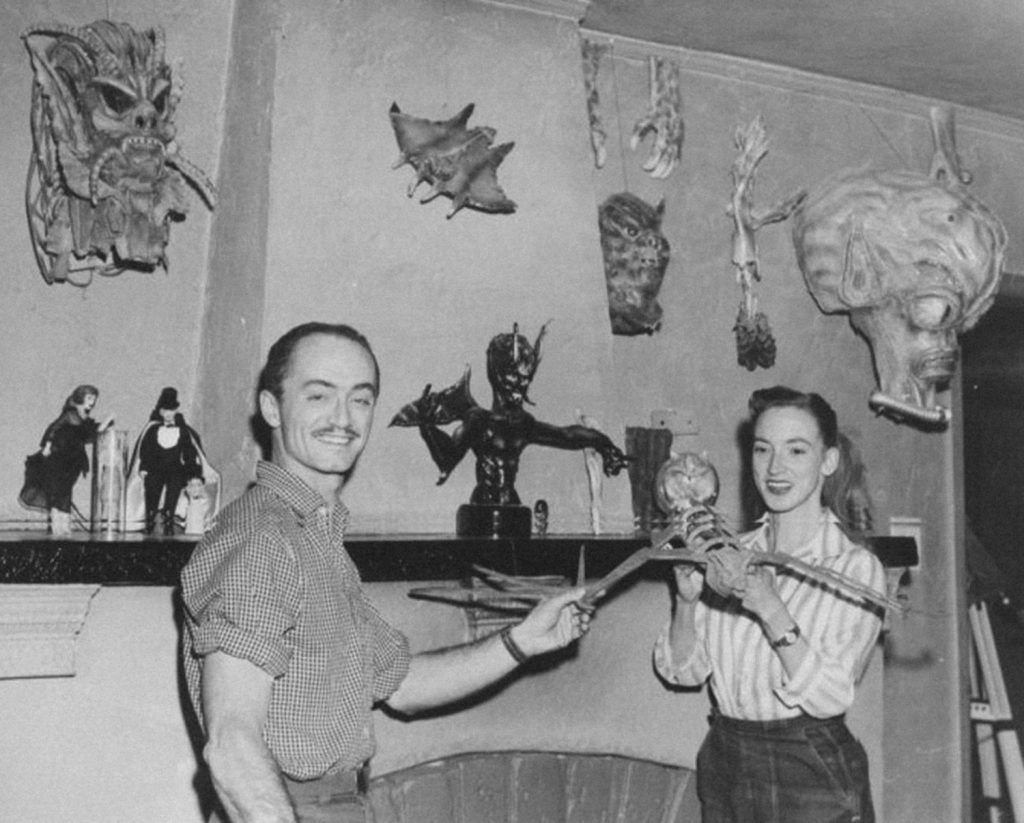
Paul made wax replicas of his pieces for the climactic scene, filmed in colour, during which the entire collection is destroyed in a fire. Sadly, art imitated life when later, his collection was, in fact, destroyed by fire, leaving him disconsolate.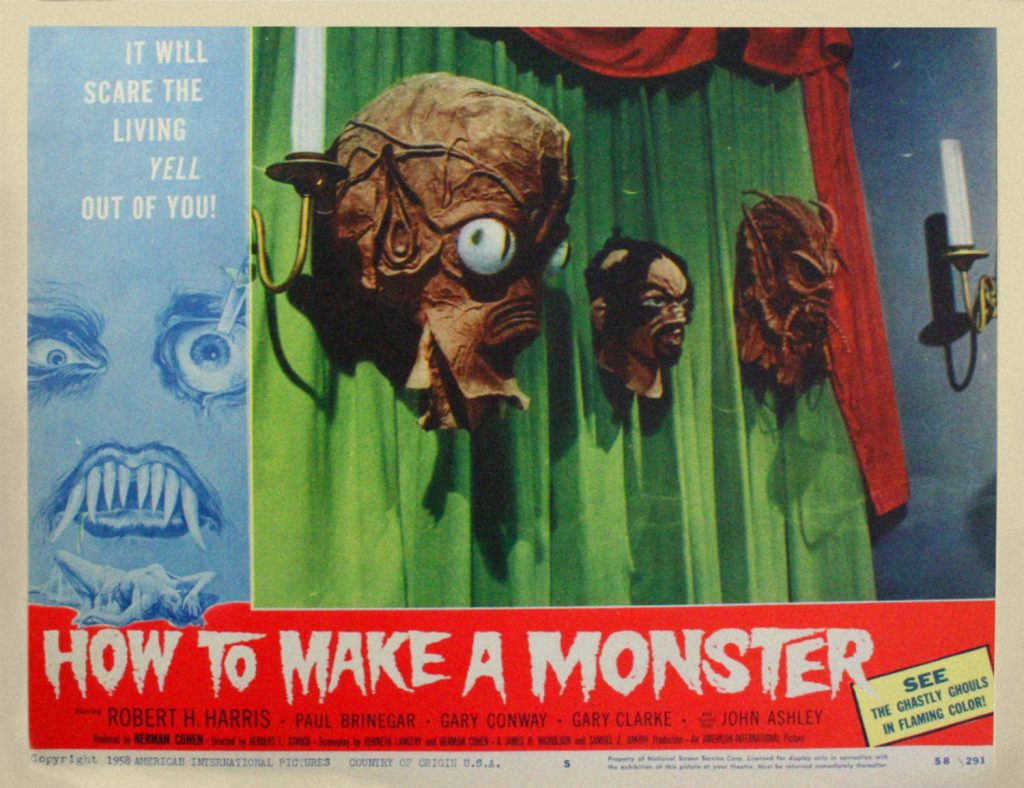
The pinnacle of Paul’s monster-making almost certainly came with It! The Terror From Beyond Space. This tale of a deadly Martian creature stowing away aboard an Earth rocketship, and picking off the crew, one by one, was apparently an inspiration for Ridley Scott’s Alien. It’s a well-made B-movie that transcends its pedigree.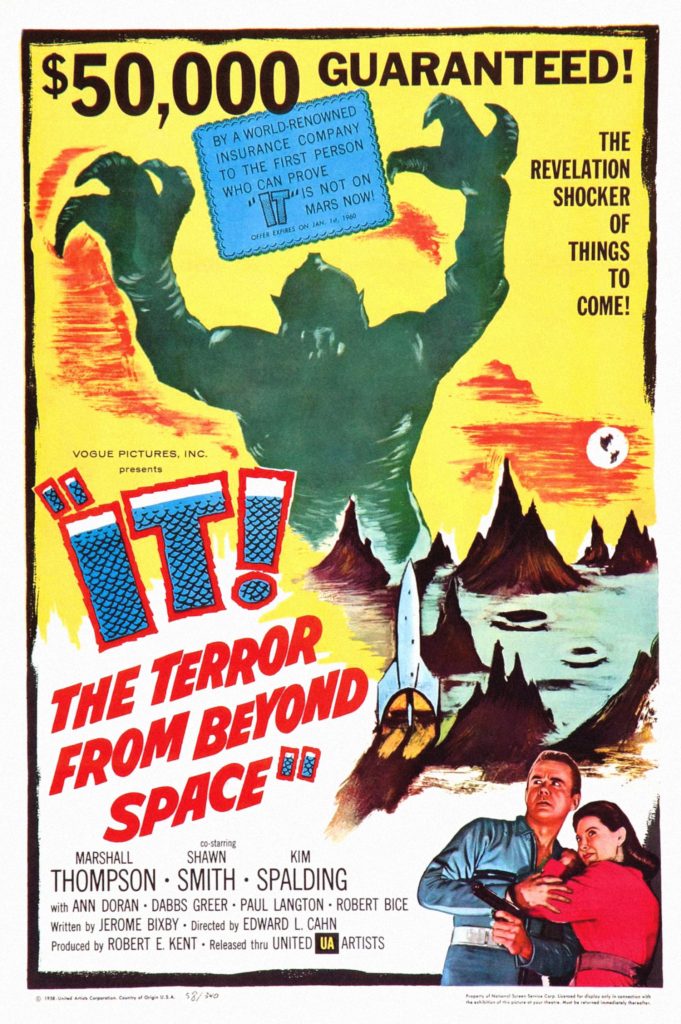
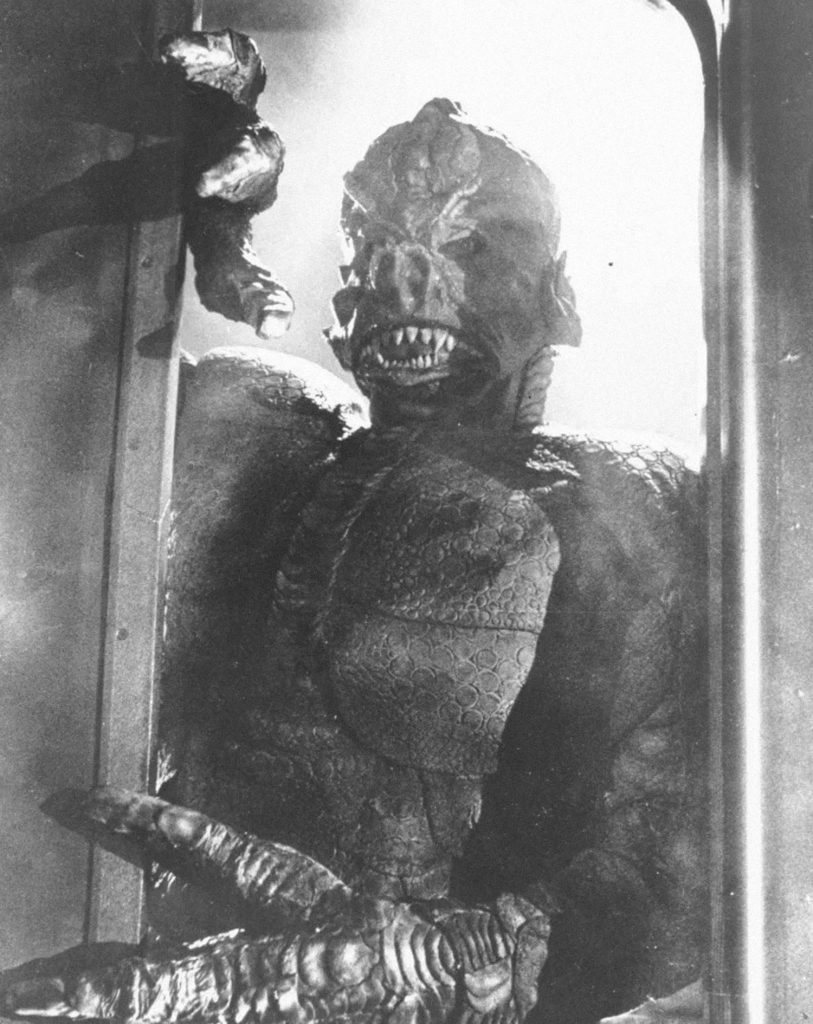
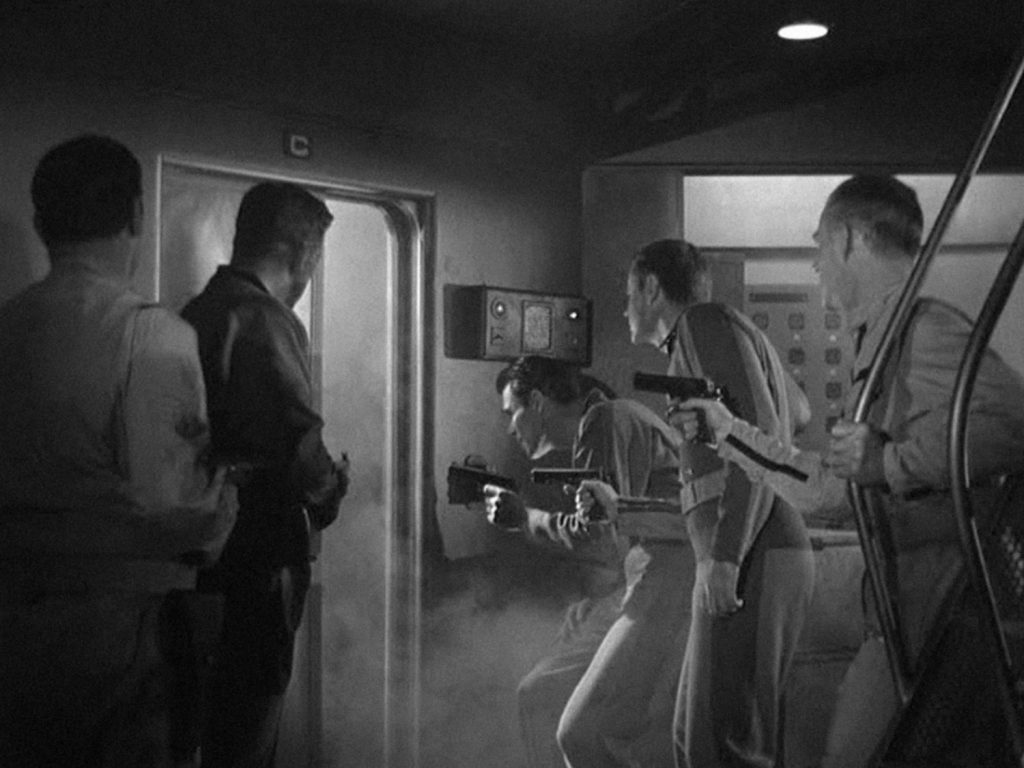

But Paul’s experience working on the production wasn’t entirely a pleasant one. His presence on set was challenged on one occasion by an assistant producer who didn’t know who he was. Paul had showed up with a prosthetic he had made for shots in which only the creature’s arm would be visible. He was told to just leave it, and to get off the set, further embittering him with regard to the industry.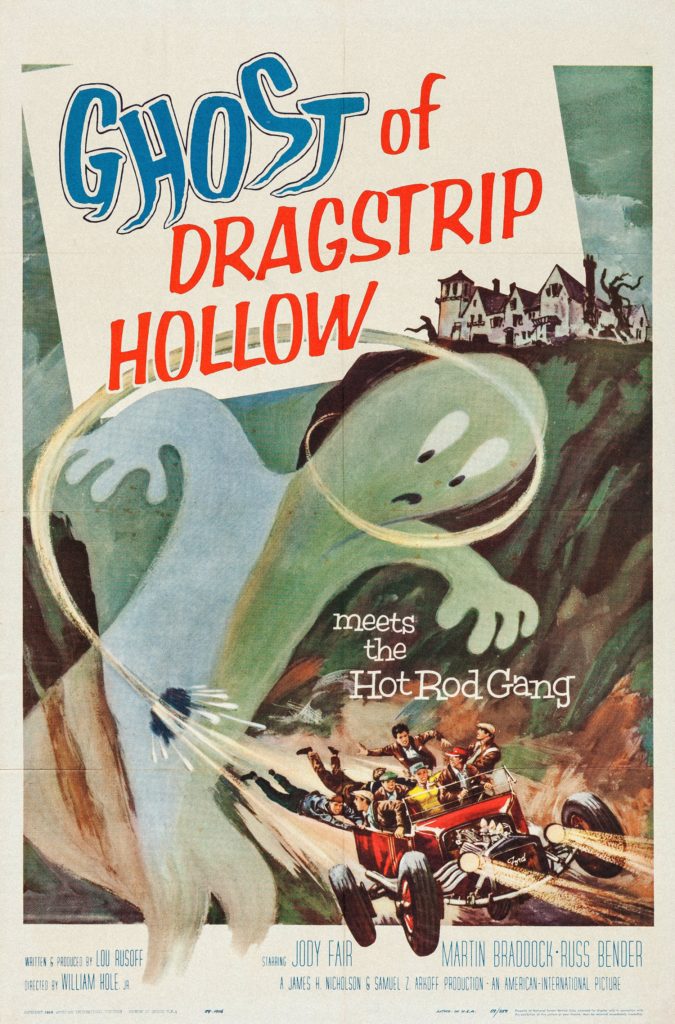
Paul’s final film was released in 1959. The Ghost of Dragstrip Hollow was a poorly executed send-up of AIP’s monster and teenaged hot-rodder movies. Paul, in his old Day the World Ended costume, essentially played himself, affecting a squeaky voice when, at a costume party, he is discovered to be a phony “monster” inhabiting the supposedly haunted mansion used by the teens as their new club house.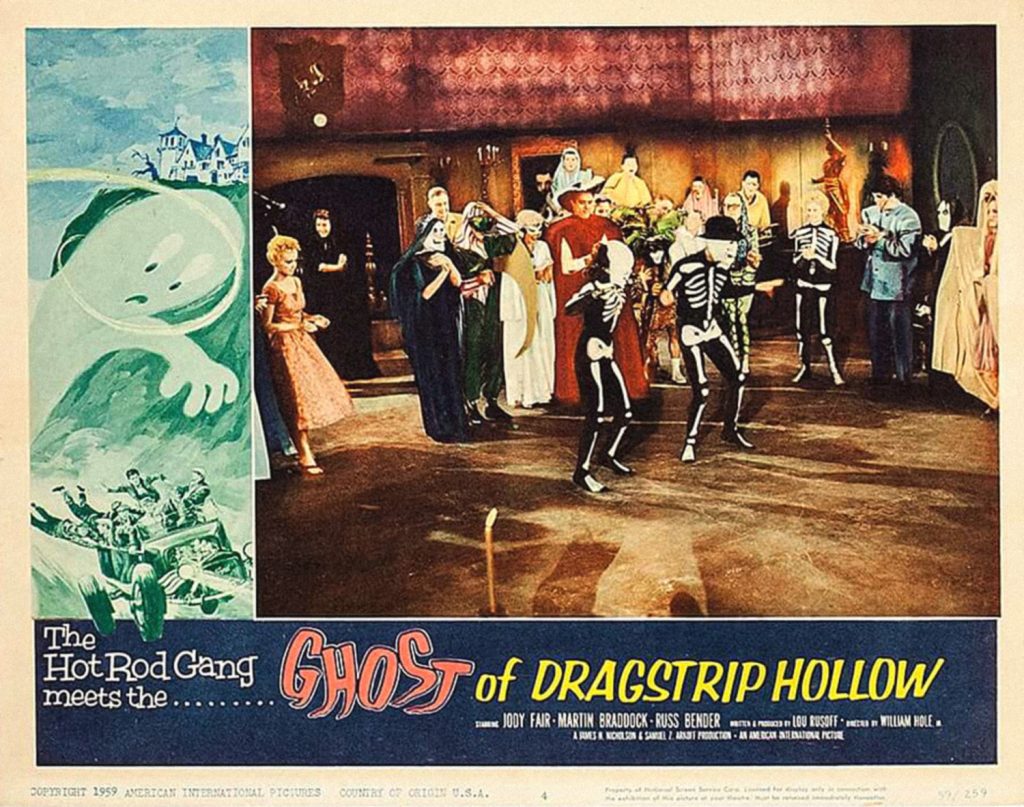
While he continued for a couple more years to submit designs for various projects, none ever came to fruition. The science fiction/horror boom of the 1950s had waned, giving way to teen-oriented movies about motorcycle gangs, juvenile delinquents, hotrod racing and, ultimately and most successfully for AIP, the beach party and surfing films of the 1960s.
After a failed venture publishing, with his friend, Bob Burns, a magazine about movie monsters and the crafting of same, he left the entertainment business altogether, earning his living instead as a carpenter.
He died of stomach cancer in 1983 at the age of 55, just as interest in the monster films of his era, and of his own contributions to the genre, began to rekindle. His devoted wife, Jackie, lived the lonely life of a recluse in their deteriorating Topanga Canyon house until her death in 2006.
Paul Blaisdell achieved much with very little over his brief film-industry career. His best monsters compare favourably to big-studio backed contemporaries like the Creature from the Black Lagoon and the Metalunan Mutant. While these creations were designed and fashioned by trained Hollywood special effects people working with the resources of studio art departments, Paul was self-taught, and worked out of his garage.

